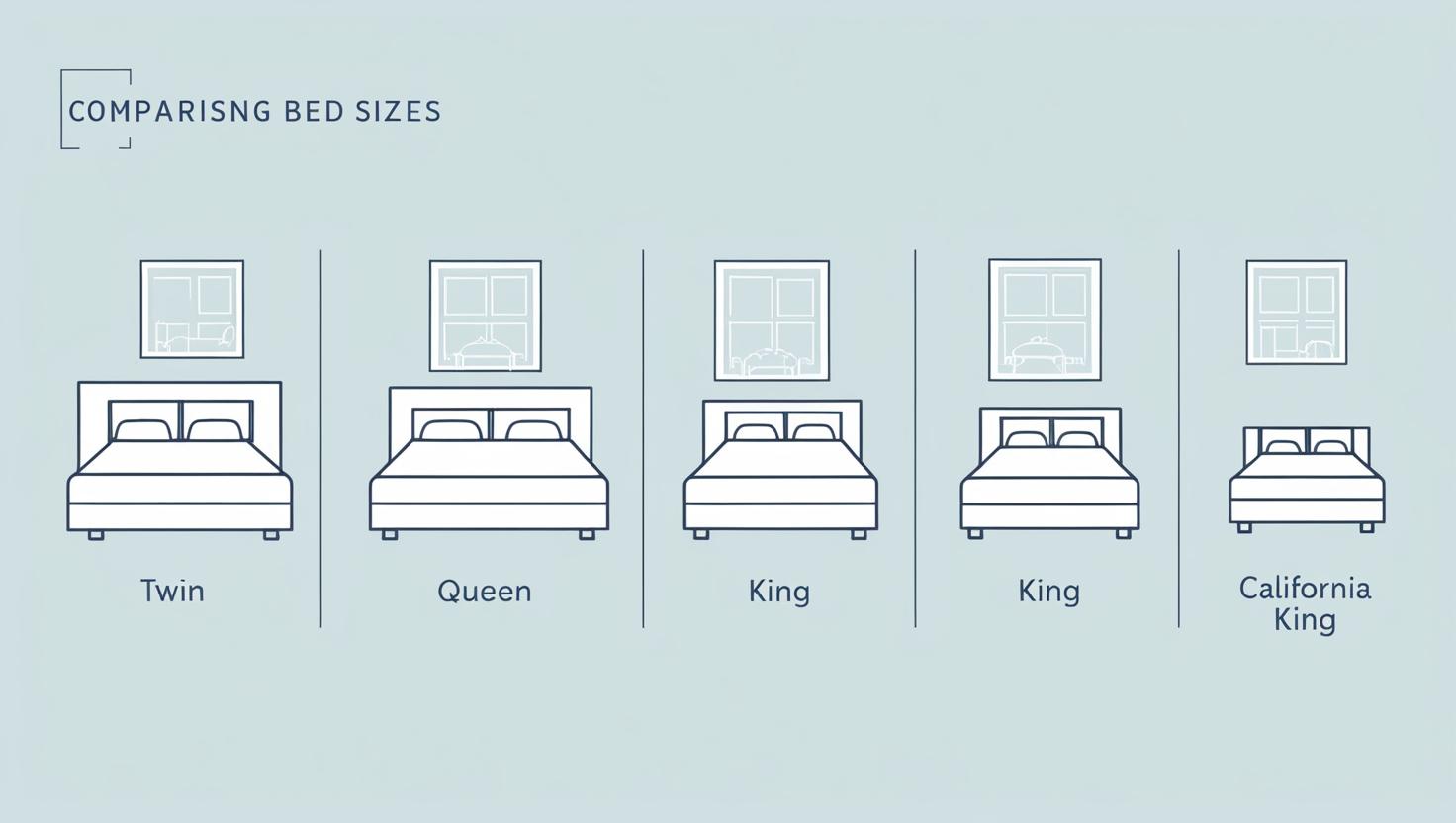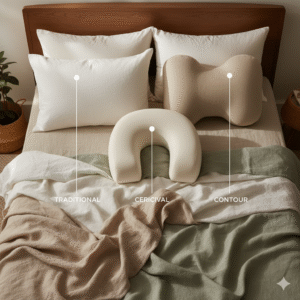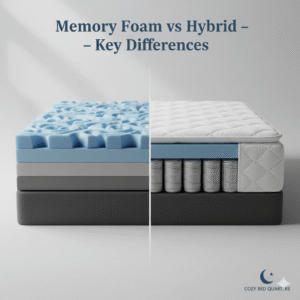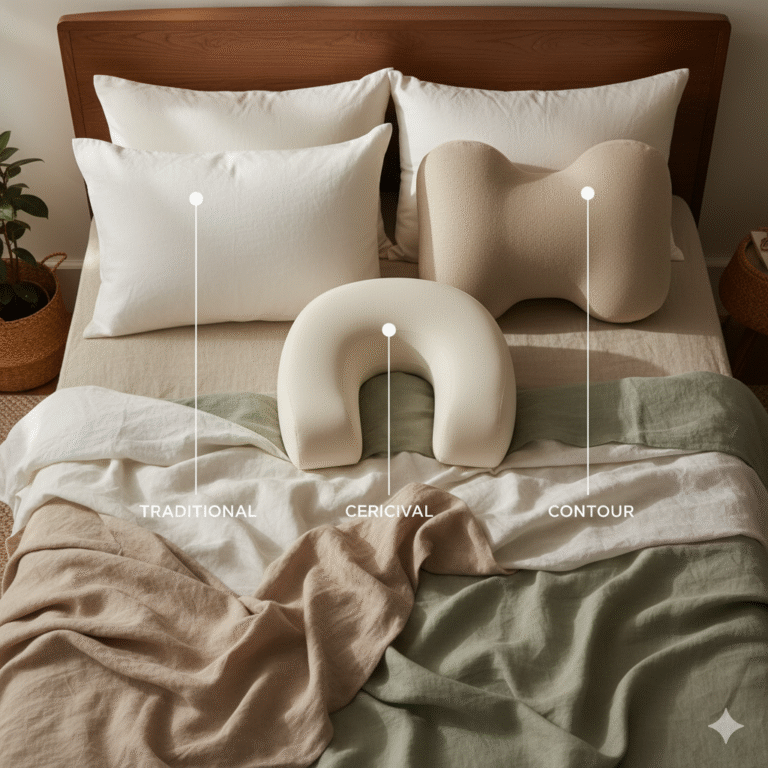Standard Bed Size Chart: Mattress Dimensions (2025)
Standard Bed Size Chart makes mattress shopping easier. Updated for 2025, this guide lets you compare sizes in inches and centimeters so you can pick the right mattress for comfort, room fit, and sleep quality. For a deeper breakdown of materials, firmness, and certifications, see our Ultimate Mattress Buying Guide.
Key Takeaways
- Standard Bed Size Chart: quick reference for 12 common mattress dimensions.
- Space planning: match mattress footprints to your room layout and lifestyle.
- Comfort and growth: choose sizes that fit sleepers, pets, and long-term needs.
- Smart shopping: avoid costly returns with accurate measurements before buying.
Standard Bed Size Chart: Quick Reference Guide
Answer first: use these quick specs to narrow options before you shop.
- Crib — 28 × 52 in (71 × 132 cm): infants and toddlers.
- Small Single — 30 × 75 in (76 × 190 cm): compact spaces, kids’ beds.
- Twin — 38 × 75 in (96.5 × 190.5 cm): kids, single sleepers, small rooms.
- Twin XL — 38 × 80 in (96.5 × 203.2 cm): taller individuals, dorms.
- Full (Double) — 54 × 75 in (137.2 × 190.5 cm): single adults, guest rooms.
- Queen — 60 × 80 in (152.4 × 203.2 cm): couples, primary bedrooms.
- Olympic Queen — 66 × 80 in (168 × 203.2 cm): couples wanting extra width.
- King — 76 × 80 in (193 × 203.2 cm): couples, co-sleeping with kids or pets.
- California King — 72 × 84 in (183 × 213.4 cm): taller sleepers, long rooms.
- Wyoming King — 84 × 84 in (213 × 213 cm): oversized comfort.
- Texas King — 80 × 98 in (203 × 249 cm): very tall individuals, spacious homes.
- Alaskan King — 108 × 108 in (274 × 274 cm): maximum sleeping space, families.
Pair the right mattress with a frame that fits your values. See our Sustainable Bed Frames Guide.

King vs. California King: Which Fits Better?
Answer first: a King is wider; a California King is longer. Choose width for couples or length for taller sleepers.
- King — 76 × 80 in: best when two people need maximum elbow room.
- California King — 72 × 84 in: best if someone is 6’3″ or taller or the room is long and narrow.
Guidelines for Selecting Your Ideal Bed Size
Answer first: start with room size, then match sleeper needs and budget. Leave 24–30 inches of walkway clearance around the bed (CDC Sleep Resources).
- Room size and circulation: ensure comfortable movement and furniture placement.
- Sleeper needs: couples often prefer Queen or King; tall sleepers may need Twin XL or California King.
- Budget vs. comfort: larger sizes cost more—balance space, comfort, and price.
- Guest rooms: Full or Queen offers flexibility for visitors.
- Sustainability: consider eco-friendly wood frames.

Additional Mattress Size Variations
Answer first: these less common sizes add width or length for specific needs (CertiPUR-US Certification).
- Olympic Queen — 66 × 80 in: adds 6 inches of width for couples.
- Wyoming/Texas/Alaskan Kings — 84–108 in wide: designed for oversized bedrooms and family co-sleeping.
- Small Single — 30 × 75 in: ideal for bunk beds and very tight spaces.
For global inspiration, browse bed designs from around the world.
Benefits of Using a Bed Size Chart
Answer first: a chart reduces mistakes, saving money and stress during the buying process.
- Quick comparisons: see differences at a glance.
- Better planning: choose bed size before committing to furniture.
- Fewer returns: confident sizing prevents regrets.

Common Bed Size Mistakes to Avoid
Answer first: most regrets come from skipping measurements or underestimating growth.
- Not measuring walkways: always allow 24–30 inches of clearance.
- Ignoring bedding fit: odd sizes can make sheets and duvets harder to find.
- Underestimating growth: kids may outgrow small beds faster than expected—consider Twin XL or Full.
- Overlooking ceiling height: tall headboards can crowd rooms with low ceilings.
- Choosing width over length: tall sleepers often need more length; a California King may be better than a King.
FAQ
What is the most popular bed size?
Queen (60 × 80 inches) balances space, cost, and room fit for many couples and solo sleepers.
How do I choose the right bed size for my room?
Measure the room, map furniture, and ensure 24–30 inches of walkway clearance on at least two sides.
Are larger mattresses always better?
No. Larger sizes need bigger rooms and budgets—choose the smallest size that meets comfort needs.
Can I use a bed size chart for custom bed frames?
Yes. Use the mattress footprint as your starting dimension to confirm internal frame clearance.
Where can I find sustainable bed frame options?
Explore our Sustainable Bed Frames Guide for vetted, eco-friendly picks.
Final Thoughts
The Standard Bed Size Chart simplifies choices—match dimensions to your room and sleepers, then choose the smallest size that still delivers comfort. For more tips, visit Cozy Bed Quarters and our Ultimate Mattress Buying Guide.
Related reading from Cozy Bed Quarters
- Exploring Modern Bed Types: A Comprehensive Guide
- Stylish Bed Frames to Elevate Your Bedroom Decor
- Gold Canopy Bed: Elegant Luxury





















